#Kazaa
Explore tagged Tumblr posts
Text

81 notes
·
View notes
Text
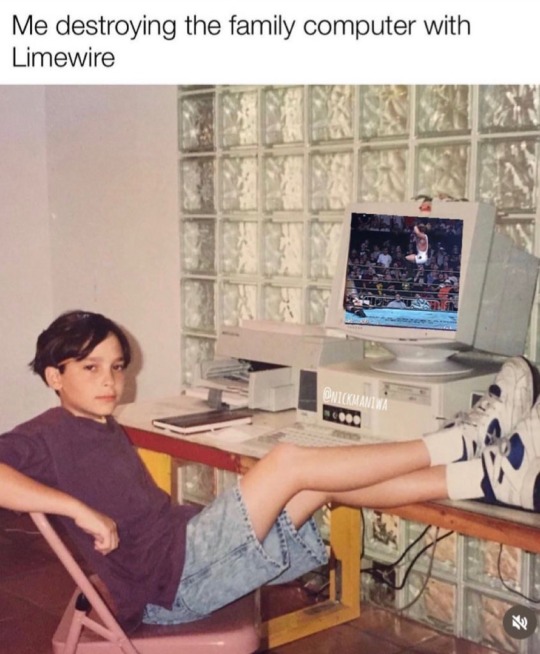
If you know, you know.
#rob van dam#rvd#ecw#extreme championship wrestling#Kazaa#Limewire#soulseek#wrestling meme#wrestling memes
7 notes
·
View notes
Text
ive been trying to find this specific DBZ amv for like 15 years.
5 notes
·
View notes
Text

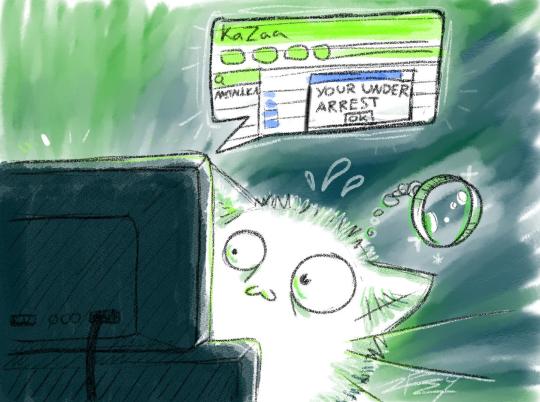


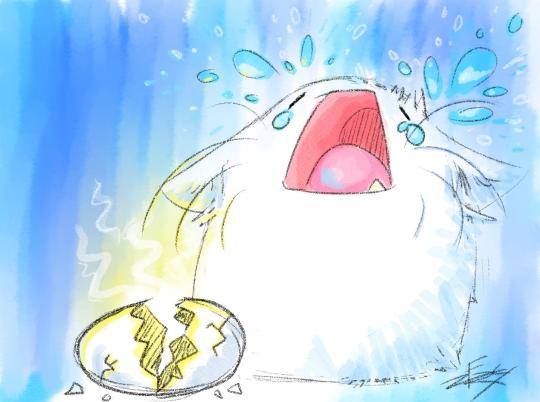
thanks to my very generous viewers, i was able to cover my bills for the month! phew! i thoroughly enjoyed putting my tablet back into use and i will very much like to do more PWYW sketch streams sometime. hopefully under less stressful circumstances lmao
in the meantime, i will be returning to my normal streaming topics and hours starting this tuesday. i hope u enjoy!
ko-fi
twitch
#sketch#cats#cute#kawaii#kazaa#mega man#pineapple#pizza#egg#faith#faith game#john ward#fanart#pharaoh man#monocle#pineapple on pizza
6 notes
·
View notes
Text

Mystique delivers a line which places her solo series so firmly in the early 00’s here.
3 notes
·
View notes
Text
David-Lee-Roth_-_Bird-On-A-Wire-(Leonard-Cohen-cover).mp3
2 notes
·
View notes
Text
the big Season 4 drawings Compilation

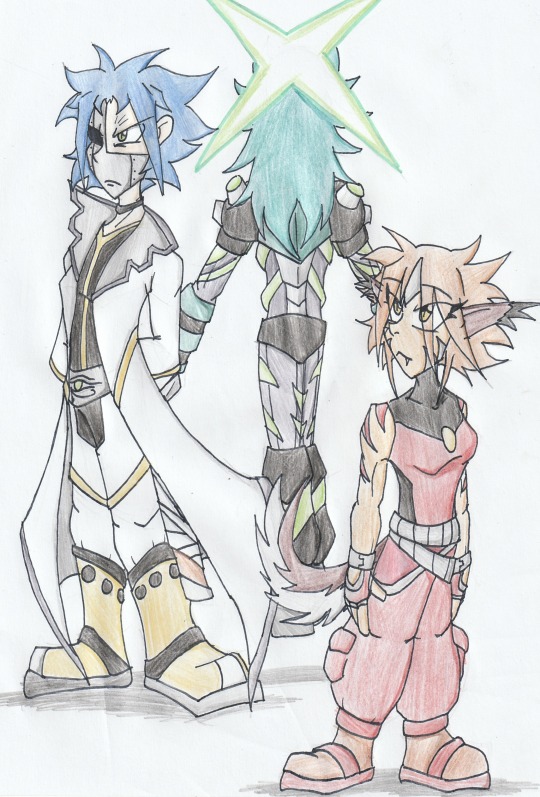
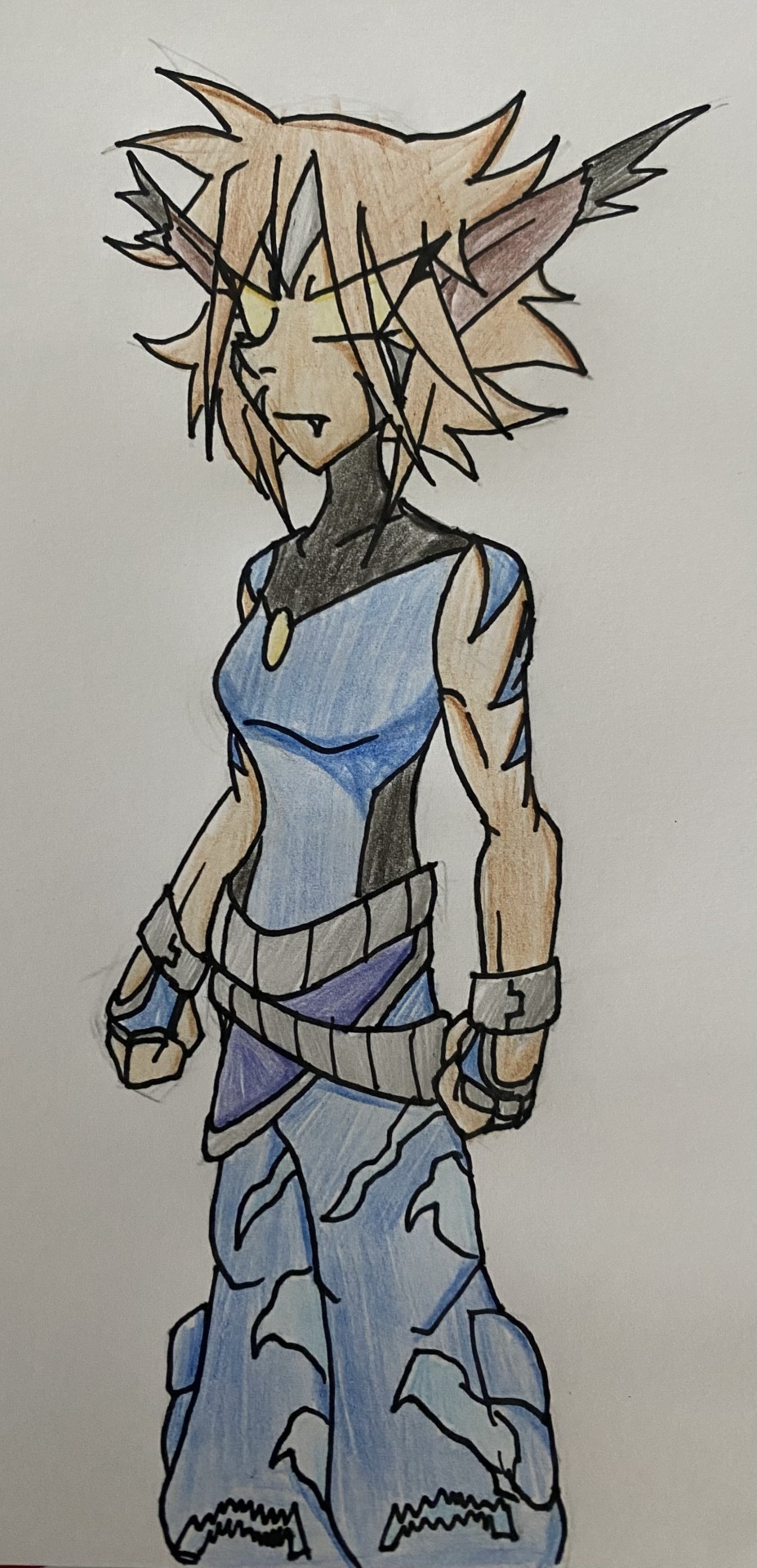


Oh boy we got a lot to talk about here.
starting with drawing numero uno. Ryouko. Second in command of the Guild of Anubis. I basically made this design more detailed and I have her Mega Man Zero feet.
Kazaa. I didn’t do much here, simply opened the coat and had the katana on the inside instead of on the back.
Fauna. This one I had some fun with. I added some tiger-like markings on the face and arms. Gave her a more innocent face and a tiny lil’ snagle tooth. for hee blue form I removed the pupils and added her name in Hieroglyphs on her pants. Though the last letter isn’t present so it just says “Faun”.
The beast mode is something that I basically just copied from @d-buggers-org Werefox Kizuna. Pose and all (I didn’t trace it). Though with some alterations, the markings, hair and ears are new. But the anatomy and pose is the same as the Kizuna drawing.
Super Kagemamoru. described by Kirb as a more horrific version of Kagemamoru I basically went wild with this design. Gave him 4 arms, much longer and spindlier arms, 4 eyes, rows of spikes and a tail. It was a lotta fun to make also I drew a lil Phaxal in his hand like in the Season 4 intro
2 notes
·
View notes
Text

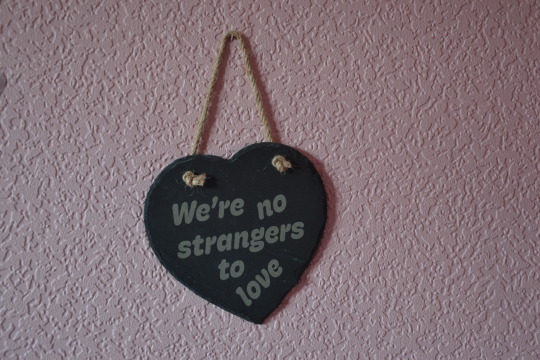
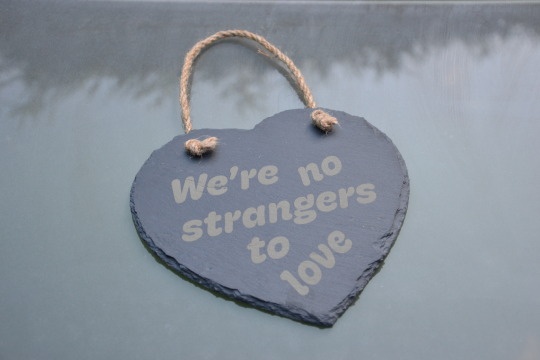
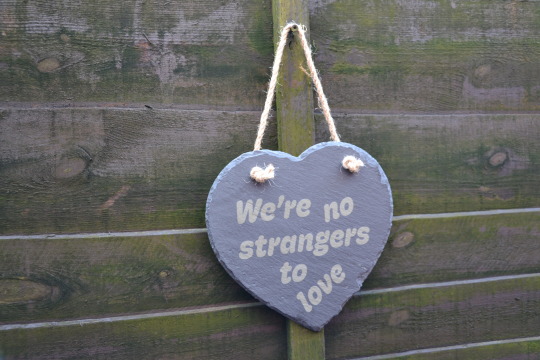
OUT with the "Live Laugh Love" crud. IN with the subtle household Rick Roll.
Available from the SpoonLagoon Etsy (click click boom right here).
You know the rules and so do I -- Follow for more alternatives to the treasure you find in charity shops/ thrift stores.
#rickroll#rickastley#livelaughlove#etsy#etsyshop#etsyseller#classicinternet#internethistorian#quicktime#realplayer#kazaa#limewire#napster#chainemail#chainmail#ytmnd#ytp#youtubepoop#nevergonnagiveyouup#werenostrangerstolove#80smusic#housewarminggift#rick roll#rick astley#never gonna give you up#live laugh love#live laugh lesbian#live laugh lobotomy#impulse buy
4 notes
·
View notes
Photo

Enviado por @diegobaldraco 😮😮😮 Follow us: @headbangerodio (Twitter & Instagram) Headbanger Odiado Spotfy: https://open.spotify.com/user/223tf7lw7uwui65krgpkjij4q/playlist/2Vk1nI87gXT8D7O7vlWuq7 #headbangerodiado #meme #memes #spotfy #memesdometal #metal #deezer #heavymetal #dead #heavymetalmemes #deathmetal #soundcloud #norway #blackmetal #metalheads #4shared #metalmemes #kazaa #spotfymemes #thrashmetal #blackmetalmemes #deezermemes #metalheadsofinstagram #limewire #oldtimesvsnewtimes #doommetal #norwegianblackmetalband #melodicmetal #powermetal https://www.instagram.com/p/CnWvXV5AO0f/?igshid=NGJjMDIxMWI=
#headbangerodiado#meme#memes#spotfy#memesdometal#metal#deezer#heavymetal#dead#heavymetalmemes#deathmetal#soundcloud#norway#blackmetal#metalheads#4shared#metalmemes#kazaa#spotfymemes#thrashmetal#blackmetalmemes#deezermemes#metalheadsofinstagram#limewire#oldtimesvsnewtimes#doommetal#norwegianblackmetalband#melodicmetal#powermetal
2 notes
·
View notes
Text
Y2K Tech
Online
Today our mobile phone is our second brain, we use it for everything except for making phone calls…
We stream tv and music without thinking, we communicate via WhatsApp and DMs, our social media personality is our personality. We are online. In the late ‘90’s/early 2000’s we had to go online, it wasn’t fast, or convenient. It was a different time, unless you didn’t live through it, you didn’t live it.
In 1999 the way we communicated was being redefined as Nokia launched the 3210, the first mobile targetted to teens with snake and coloured covers (easily pleased back then). Over 160 million 3210’s were sold, making it the most popular phone to date. A year later BlackBerry released the first phone that had access to e-mails. BlackBerry were innovative as they brought instant messaging on the go to the market with BBM, their instant messenger service.
We had already been messaging our school friends (and strangers we’d befriended online) with MSN Messenger, on the desktop computer. Messaging strangers online is normal these days but back then you’d be warned out off it, in fear of being groomed but for a generation, it was a new place where friendships could blossom, with people who lived in other countries or people you met at a gig.
Mobile phones changed language as the 140 character limit on text messages saw the introduction of “text language” to squeeze as much into your 10p text message using “u” for “you”, “4” for “for” etc… but it was MSN Messenger where LOL (laugh out loud) and BRB (be right back) just became modern-day shorthand, even if you weren’t actually laughing...
How we access content today is unrecognisible to how we did in the 2000’s, but that change started in 1998…
The boom of the CD started in 1984 but it dramatically collapsed in 2000 thanks to 2 tech-obsessed 16-year-olds, Shawn Fanning and Sean Parker who met each other online in 1998. They were both highly intelligent, Sean got into coding aged 7, at 14 he discovered ‘hacking’ which opened up a new community to him. Hackers would share information with each other in online forums (we call that world “the dark web” today).
They both moved to Silicon Valley, the new tech hub in the Bay Area, Calfornia to develop their first project, Napster, leaving school behind. They didn’t think they were doing anything illegal, they were music fans themselves. Napster was revolutionary and has changed the way people consume and value music today but again, their battle was nothing new. The music industry had fought against ‘free’ music before with the introduction of the radio, When the Napster founders had to defend the platform in court, they compared it to photocopy machines and VHS recorders. Napster was a peer-to-peer platform that essentially cut out the middle man, users didn’t need to upload or download MP3 files (songs), they were transferred directly from the user's hard drive.
The internet has reimagined creative industries including print and film, but it nearly killed the music industry.
Napster started to grow in the fall of 1999 on college campuses where high-speed internet was available. The founders tried to negotiate deals with record labels but they weren’t playing ball and reacted too slow, suddenly it was too late and meetings turned from conversations to legal battles. The ongoing, public legal battles only helped Napster get more popular and more music was shared. Its disruption was unique and investors poured money into the platform but it wasn’t built to make money, it couldn’t be monetized.
Napster was the first ‘file-sharing’ platform. Before it, having the ability to get music for free was unthinkable, once Napster had gone huge it reached a stage where consumer habits were irreversible, for years.
It revolutionised how we listen to music. It also birthed the ‘I want it now’ attitude, the ‘on-demand’ culture we live in now started here. We no longer needed to leave the house to buy a CD, come home and listen to it when you could press a couple of buttons, seven minutes later your dial-up connection would download it to your computer. Without Napster and the peer-to-peer generation, we wouldn’t be living in the streaming world. Consumers turn to piracy when they can’t get hold of a product legitimately. It was morally and legally wrong, users knew that too but it was liberating. It was also an opportunity to discover new music as you could see what else is in the library of the user you’re downloading from.
While some artists, such as Limp Bizkit supported the platform, seeing it as a gateway for new acts to reach an audience, Metallica drummer Lars Ulrich, became the most vocal name against it. The band spoke up after hearing one of their songs on radio stations around the world before it was even finished. They were baffled, they didn’t understand how this could have happened, it was traced back to Napster, which they hadn’t heard of. For Metallica, it wasn’t about money, it was about choice, they hadn’t been asked if they would like to be involved, it was out of their hands.
Lars took the names of 300,000 Napster users who had downloaded Metallica's music to Napster HQ. The platform removed the users but within hours they had created new accounts under new names. Lars was portrayed as the villain but looking back, he was right.
Napster was hijacking a multi-million-pound creative industry without doing anything however that was never the purpose, it was built with naivety, both Sean and Shawn just thought it was a good idea. It made sense to them.
For years record labels had been used to making billions of £, suddenly that was taken away. Napster was forced to close down in July 2001 after the RIAA (Recording Industry Association of America) won the legal battle of copyright infringement but it didn’t solve the problem as users found other platforms. At its peak there were 80 million users on Napster, 20,000 of them were sued by record labels.
The Birth of Online Music
In January 2000 Pandora launched in the US, the initial version was an online radio station, an alternative to the already established stations while, 2 months later, in London, Freenet was created, an indestructible file-sharing site, the only way to stop it would be to remove it off every single computer that had used it.
As Napster was gaining headlines with its very public court cases and legal spats, another peer-to-peer platform launched and this time, it wasn’t limited to sharing MP3 files, which for the user was both good and bad.
On the 3rd May 2000 Limewire went live and it was responsible for 80% of illegally downloaded content in the US. During its 10-year lifespan, Limewire was downloaded 200 million times, at its most prominent time, it had over 50 million daily users.
Internet was slow back in the early 2000’s, it could take 2 days to download a film and once downloaded it often didn’t work, it was the wrong film, wrong language, be porn or filled with viruses that would kill your computer. There were numerous court cases linked to videos of minors in porn being shared on Limewire, these were often accidentally downloaded.
The third major player in peer-to-peer platforms was Kazaa, launched in March 2001 by Niklas Zennström and Janus Friis (who would go on to create Skype). Like Limewire, files of all kinds could be shared and there were plenty of viruses knocking about, including some deliberately created by the RIAA.
Kazaa’s downfall began in 2003 when the RIAA started to sue its users rather than the platform which saw its user base drop off dramatically and it closed down in 2004.
Then there was The Pirate Bay from Sweden, created in 2003, the peer-to-peer file-sharing platform with a difference as it used torrent files that were harder to monitor. The platform was shut down several times, only to reappear under new domains. In 2009 The Pirate Bay founders were sentenced to 1 year in prison and fined £2.8 million after being found guilty of copyright infringement.
To combat illegal downloads Apple launched the iTunes Store in April 2003 where users could pay for MP3s. It was a success story but it came too late, if it had been around when Napster was at its peak it might have had a bigger impact but people knew they could get music for free now.
Limewire’s presence was much greater than Napster and Kazaa. In 2004 it became the biggest peer-to-peer platform and the second biggest access for digital music, behind the iTunes Store. It gained new users after Napster closed, people discovered it through online forums. Following criticism from the music industry, the developers created a code that would block copyrighted content being shared but users found ways around it.
The RIAA took Limewire to court in 2006 for copyright infringement while MGM sued Kazaa’s parent company for $100 million. By 2007 the US music industry was losing $12 billion a year from music piracy and in 2010, after a 4-year court battle with the RIAA Limewire was shut down, initially asking for $72 trillion but settled out of court for $105 million.
For all the bad that illegal downloading brought, it also allowed people to broaden their tastes, musicians had more ways to find influences and create more diverse music. The standard has also had to up its game, an album can no longer get away with a few singles and throw-away fillers.
NEXT CHAPTER
0 notes
Text
Un día como hoy (15 de octubre) en la tecnología


El 15 de octubre de 2005, se anuncia que el servicio de intercambio de archivos de protocolo FastTrack, Kazaa P2P, supera los 54 petabytes (54 millones de gigabytes) de transmisión de datos. Feneció en agosto de 2012 debido a demandas colectivas de orden mundial. #retrocomputingmx #Kazaa
0 notes
Text
Someone please make an edit of Nobunaga and just put a random clip of Moist Critical in the middle of it
7 notes
·
View notes
Note
how much music have you pirated
nice try, john flansburgh
#for real tho probably. QUITE a bit of it lmao#I'm not to blame my dad introduced me to kazaa and limewire at a very young age#it's a contentious topic for sure but. personally I'm glad you can do this so easily#because you can experience so much more music than you could if one of your only options was still 'shell out and hope you like it'#I do have plenty of purchased stuff tho! aside from the obvious of supporting artists you like for their work#physical releases are just better. the liner notes? covers?#some kind of cool extended concertinaed booklet with extra photographs and details?#I know you can buy things digitally but#buying something always brings a physical object to mind#anonymous ask meme#asks
7 notes
·
View notes
Text
Rereading the feedback on my last paper to help with the one I have due today (the format is the same) and one of the comments I got was "It felt like you didn't really know what you were talking about." Because I didn't 💕 Thanks 💕
#please feel free to ignore this#Jake meets world#Last assignment was 'design a better P2P file sharing system' I haven't used P2P since Kazaa went down please be so nice to me#I know what I'm talking about this time though#Still chasing that exceptional 😤#Technically I have time but it sure would be nice 🙃
4 notes
·
View notes
Text
A huge shame Vimm's rom section is shutting down.
Was a great site for new people getting into emulation or finding backups on the net, the interface was easy to navigate and it made emulation much more accesible to newer folks which I cannot express in words how absolutely fantastic that is.
Its sucks that another legacy rom site is dying, reminds me of emuparadise's half death,
Had a great run and ill miss it a bit...
...

With that in mind, I feel people screaming that everything is gone is a bit out of proportion.
I liked vimms but acting like it was the only place on the internet that was safe to get games is a bit ridiculous.
Its not like every rom was wiped off the internet because vimms is going down.
Theres a thousand archives and a million sites dedicated to this stuff- hell a bunch are even better than vimms, providing even more at a better quality.
I dont mean to crap on its legacy but vimm's had a good number of issues, man.
Those download speeds could be straight ass, internet archive levels of bad.
Im sure those who are sad over it going down will find another alternative in no time... and I hope they dont go all loud about it.
Part of the reason this is happening is because people dont know when to shut their mouths sometimes and that sucks
but thats another topic entirely.
What im trying to say is, yes its sad that this happened... but its not like it was the only option, yknow
#Also can I just say that I wish more people were tech literate.#A good chunk of people crying over this believe half the sites on the fucking internet are viruses- why.#Just... dont fuck arround with exes and you're good- people pull some nonensense like every god damm site is a miniature kazaa#Please I implore you to learn how to computer... just a bit
2 notes
·
View notes
Text
11 year old me seeing this sometime about 12pm (Eurovision was the allowed late bedtime day) and going mental about it
I ended up buying the eurosong CD of 2003 with my pocket money and then limewire downloading t.a.t.u.'s entire discography
#fun fact: I discovered Emilie Autumn because of limewiring t.a.t.u.#t.a.t.u.#ne ver ne boisia#eurovision#2003#tbf it might have been even before limewire#i remember using kazaa first
3 notes
·
View notes